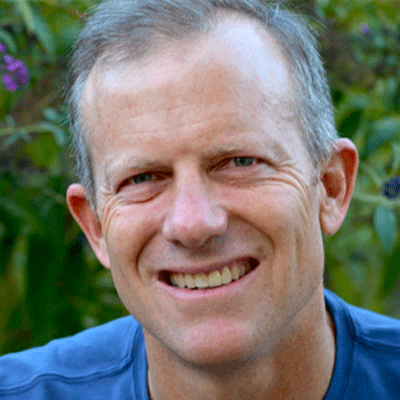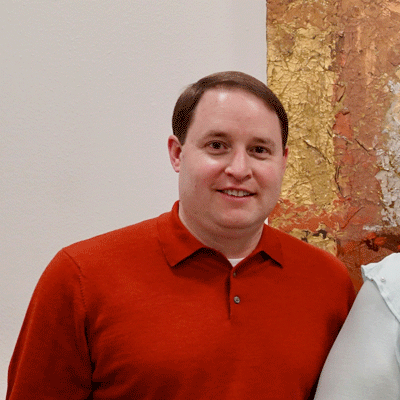Speakers reveal some surprises, including how eugenics once appealed to progressives
by Mike Ferguson | Presbyterian News Service

Photo by Trust “Tru” Katsande via Unsplash
LOUISVILLE — Wednesday’s online forum Race, Science and the Church uncovered some surprising facts, including this one: Eugenics, which had its heyday between 1880 and 1930 and may be returning in new forms today with genetic engineering technology like CRISPR, received support from, among others, religious progressives.
“I’m in a mainline denomination. That was a surprise, and something of a concern,” said the Rev. Dr. Greg Cootsona, a Presbyterian pastor who helped lead the Synod of the Covenant’s “Race, Science and the Church” webinar as part of the Science for the Church organization.
While researching his book “Negotiating Science and Religion in America,” “what blew me away was the development of scientific racism and its expression in eugenics,” said Cootsona, project co-director for Science for the Church and lecturer in Religious Studies and Humanities at California State University at Chico.
During the time that eugenics was at the height of its popularity, 27 states sterilized 60,000 people against their will, according to Cootsona, many of them people of color. In his 1927 opinion in the infamous Buck v. Bell case, in which the U.S. Supreme Court found constitutional a state statute permitting compulsory sterilization of “the unfit, including the intellectually disabled,” for “the protection and health of the state,” Justice Oliver Wendell Holmes, Jr., wrote, “Three generations of imbeciles are enough.”

The Rev. Dr. Greg Cootsona
“Science is not culturally neutral,” Cootsona said. “It has also been part of the problem.”
In the 1925 Scopes Trial, “it was progressives pushing eugenics in the civic biology class that John Scopes was teaching,” Cootsona noted about the trial mostly hinging on teaching evolution in Tennessee schools. Conservatives and the lawyer defending the school district, William Jennings Bryan, resisted eugenics, defined as “the selection of heritable characteristics in order to improve future generations.”
“I’m not saying I side with William Jennings Bryan,” Cootsona said, “but I want us to see how much this is part of our life today.”
Why should we care? “Because racism is a sin,” Cootsona said. “It subverts the eschatological vision for a flourishing humanity.”
Cootsona cited the vision John presents in Revelation 7: “After this I looked, and there was a great multitude that no one could count, from every nation, from all tribes and peoples and languages, standing before the throne and before the Lamb, robed in white, with palm branches in their hands.”
“All people, says the Bible,” said Cootsona. “That’s the vision of God.”
Is race biological?
Part of dismantling racism includes taking on this question, said the Rev. Drew Rick-Miller, Science for the Church’s project co-director. While we start with scripture, we’re wise to also look at another of God’s volumes, the Book of Nature, Rick-Miller said.
Since Charles Darwin, “the early fathers of science … lived in cultures that assumed race was real and something natural and biological, that something inherent differentiated the races.” Rick-Miller called that “a white supremacist type of lens” that’s “beginning to change now.”

The Rev. Drew Rick-Miller
Human beings have less genetic variation than a group of chimpanzees found in West Africa, Rick-Miller said, as a video from the American Association for the Advancement of Science points out. In fact, all Homo sapiens share 99.9% of the same genetic information, which is rare in the animal kingdom and “suggests that race is not biological,” Rick-Miller said.
He then displayed photos of thee genomicists: J. Craig Venter, James Watson and Junhyong Kim, all of whom had their genome sequenced. As it turns out, Venter and Watson shared more in common with Kim than with each other.
“It’s a striking example of how genetics doesn’t map onto our categories of race,” Rick-Miller said. A fact many people ignore is that Africa being the cradle of humankind, “we all began Black.”
Many people continue to hold racial stereotypes on intelligence and athleticism, Rick-Miller said, but “the biology does not support it. Every people group has diversity, and every race has a variety of abilities of all sorts.”
Instead of biology, “culture determines these things,” Rick-Miller said. Consider the athletes who compete in the National Football League, the National Basketball Association, Major League Baseball, the National Hockey League, and rugby and volleyball at the highest levels, Rick-Miller said. “There are a lot of similarities there, but cultural norms determine who pursues what. The desire to read race into biology has people conflating and confusing these things.”
In Brazil, a white mother and a Black father might produce three basketball players — one Black, one white and one Pardo, or brown, according to that country’s census categories. The three players have the same biology, more or less, but might identify with three different races, and “that is culturally how they are understood,” Rick-Miller said. “It helps to get outside our own lens and look at how other cultures see that.”
“I don’t presume that biology is the solution to the racial problems we have. Biology is one angle to approach,” Rick-Miller said. One should also consider historical, cultural, religious, economic and political aspects of racism as well, Rick-Miller said.
“In my experience, the perception that race is biological is really strong,” Rick-Miller said. “I think it’s necessary to unpack the biology of race as we are addressing racism.”
The second part of the Race, Science and the Church webinar offered by the Synod of the Covenant and Science for the Church is scheduled from noon through 1:30 p.m. Eastern Time on Wednesday, Feb 23. The event is open to anyone who’s interested. Learn more here and register here.
![]() You may freely reuse and distribute this article in its entirety for non-commercial purposes in any medium. Please include author attribution, photography credits, and a link to the original article. This work is licensed under a Creative Commons Attribution-NonCommercial-NoDeratives 4.0 International License.
You may freely reuse and distribute this article in its entirety for non-commercial purposes in any medium. Please include author attribution, photography credits, and a link to the original article. This work is licensed under a Creative Commons Attribution-NonCommercial-NoDeratives 4.0 International License.
Categories: Racial Justice
Tags: american association for the advancement of science, buck v. bell, california state university at chico, crispr, eugenics, justice oliver wendell holmes jr., race science and the church, rev. dr. greg cootsona, rev. drew rick-miller, science for the church, scopes trial, synod of the covenant, william jennings bryan
Ministries: Gender, Racial and Intercultural Justice